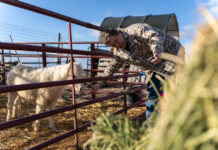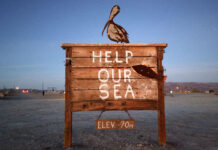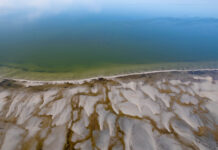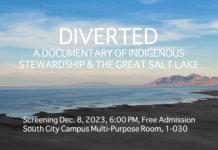The Great Salt Lake Collaborative is a group of news, education and media organizations – including The Globe, Amplify Utah and student journalists at Salt Lake Community College – that have come together to better inform and engage the public about the crisis facing the Great Salt Lake.
The Great Salt Lake Collaborative surveyed for audience questions about the lake, and The Globe is publishing experts’ answers to your questions weekly. This week’s edition explores how this crisis happened – and how much time there is to save the lake.

What’s the biggest cause of the lake’s decline?
People are simply using too much water.
Sarah Null, a watershed sciences professor at Utah State University, said water from the Bear, Weber and Jordan rivers would typically flow to the Great Salt Lake without human intervention.
That, however, isn’t happening.
“We divert and consume a lot of that water,” Null said. “We have a very small amount of streamflow going to the lake… It goes to cities, it goes to industries, it goes to our indoor water uses, our outdoor water uses and our agriculture.”
The majority of the water, about 65%, is diverted for agricultural use, Null said, and a more efficient use of that water in agriculture would help increase levels at Great Salt Lake. The state agriculture department recently awarded over $25 million to 140 projects under its water optimization grant program.
“But it can’t end there,” Null said. “We need to make sure that as we implement conservation, for both agriculture and for urban uses, that the saved water flows directly to the Great Salt Lake.”
While water use by people and industry may be the biggest reason the lake is shrinking, rising global temperatures are also a major contributing factor.
How much time do we have to turn this around?
Shih-Yu Wang, who teaches climate dynamics at Utah State University, said we have “a decade or two” to reverse lake shrinkage.
While some are focusing on conserving water in the hopes more water will make it to the lake, Wang said another major threat are rising global temperatures. The warming climate, he said, influences the levels of water at the lake.
The Earth naturally goes through periods of warming and cooling. However, greenhouse gas emissions from humans have increased how quickly the planet warms.
“The rate of warming is something that we have never observed,” Wang said. “In the past, the interglacial period took thousands of years to happen.”
Action against global warming needs to be done on a global scale. But if locals want the lake to survive, fighting against rising temperatures needs to happen here, and soon.
“It’s an inevitable decline. It means it’s just not going to come back if we keep the warming rate as was projected,” Wang said.
Even though global warming can feel like an insurmountable challenge to solve, Wang said it’s possible.
“The only way the warming rate can be stopped is if we reach so-called carbon neutral,” he said. This means that any carbon dioxide released into the air needs to be offset by something “as simple as planting more trees.”
At what point does the lake “die” and is no longer retrievable?
This question, from a reader in Ogden, is more complicated.
“We don’t know the answer yet,” said Bonnie Baxter, director of the Great Salt Lake Institute at Westminster College.
Multiple saline lake systems around the world are currently drying, meaning those who are fighting for Great Salt Lake aren’t alone. But, previous saline lake restoration efforts can be used as a guide.
“The important thing is [that] we strive to preserve the health of the lake,” said Andrew Rupke, an industrial minerals geologist at the Utah Geological Survey.
Saline levels will continue to rise as the water levels shrink, he said, risking life at the lake.
Microbialites, cyanobacteria and brine shrimp do best when lake’s saline level is around 12 percent, according to Baxter. And they all play a critical role in the lake’s food chain systems. In fact, the food cycle starts with the bottom-dwelling and free-floating microbes. They provide nutrients for the brine shrimp and brine flies, which are eaten by waterbirds and shorebirds.
The lake’s saline level is currently “above 18% in the open water,” Baxter said. “This salinity is beyond the max for the cyanobacteria.”
While researchers have other concerns about the lake dying – such as dust emissions and economic impacts – the salt content is most pressing because increased salinity would happen first and lead to the collapse of the food chain, University of Utah atmospheric sciences professor Kevin Perry told Great Salt Lake Collaborative partner KCPW.
“We’re going to end up with millions of birds dying and it’s going to be an ecological disaster of unprecedented proportions,” Perry said.
Do you have a question about the lake? Visit the Great Salt Lake Collaborative website to participate in an audience survey.






